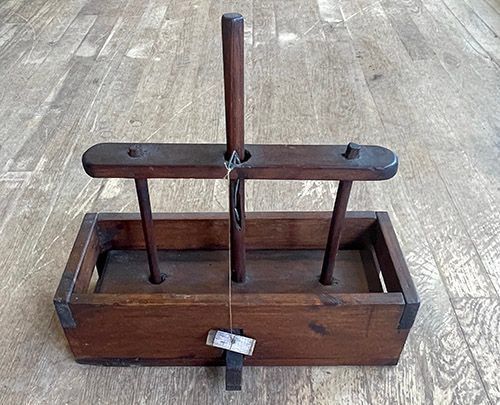Deadfall mousetrap
Name/Title
Deadfall mousetrapEntry/Object ID
2025.1.155Description
Wooden deadfall mousetrap.Context
Traps of the deadfall design were commonly used in England for over 300 years, from well before the 1600s. A deadfall trap is mentioned in Leonard Mascall’s book of 1590, where it is listed amongst other commonly used traps of the period. The basic principle is a simple one; a heavy wooden block is suspended above a baited treadle and held in place by a trigger known as a ‘clicket’. Two vertical rods pass through the block to act as guides to ensure that the block falls correctly and on target. The trigger mechanism on these traps is simple to make with a little woodworking skill, but must be built in as the trap is assembled. A section of the base board is hollowed out and a new piece crafted to fit into the hole and form the treadle. A long peg is left on the end of the of treadle poking through the side of the trap. The treadle is fixed along the back edge using a strip of leather nailed to the treadle and the trap floor. The end of the treadle peg has a small hollow cut into it and a corresponding hollow is cut into the outside of the trap. These are positioned so that if the treadle is raised the metal clicket can be held in place by the weight of the block. The treadle is baited. The weight of the any mouse on the treadle pushes it down, releasing the clicket and so allowing the block to fall. (Vintage Traps: https://www.vintagetraps.co.uk/shop/vintage-english-deadfall-mouse-trap/)Category
Domestic



